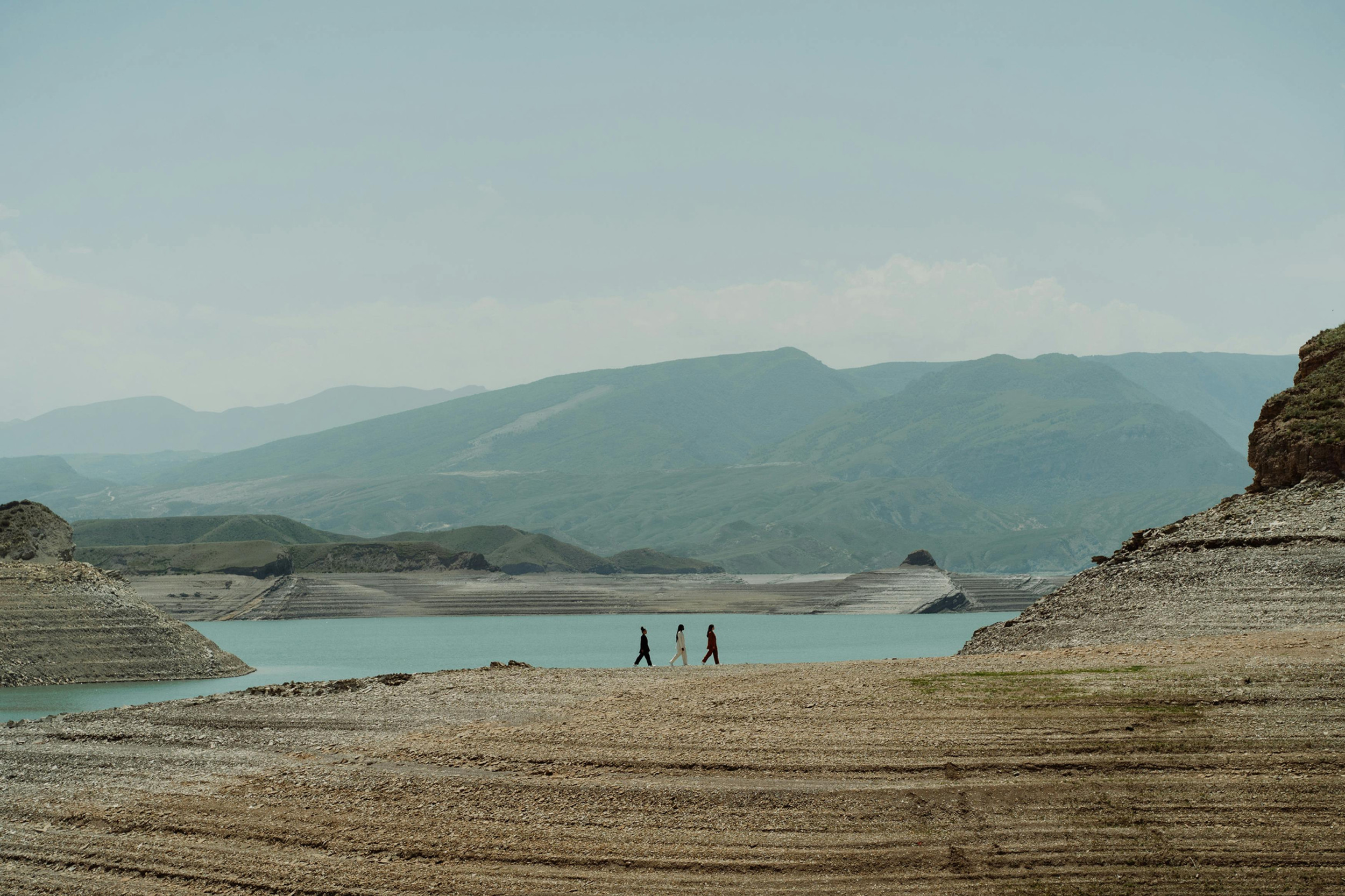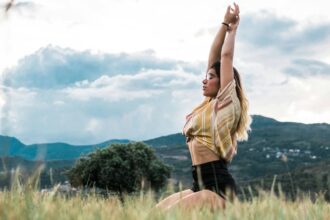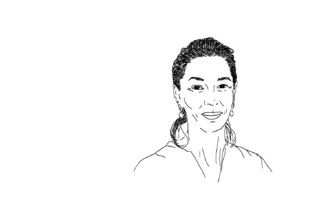When Marie-Claire Daveu (Kering’s Chief Sustainability and Institutional Affairs Officer), Floriane de Saint Pierre and I met in Paris in 2023, the air was heavy with a sense of fashion’s unfulfilled potential. After nearly ten years in partnership, Centre for Sustainable Fashion (CSF) and leading luxury group Kering had created the conditions for maverick practices to develop. Through the centre’s framework, co-created curriculum and mentoring, we had championed an early iteration of a Social Profit and Loss account, designed by a group of London College of Fashion (LCF) postgraduate students, to be integrated into Kering’s pioneering Environmental Profit and Loss accounting methodology. We nurtured one of our LCF MA Fashion Futures students’ projects into the Post Carbon Lab, its co-creator, DJ Lin going on to achieve one of the first Purple Plaques and UK Women in Innovation Award by UKRI’s Innovate UK. We co-created the world’s first open-access course in luxury fashion and sustainability, ‘Understanding Luxury Fashion in a Changing World’, with over 90,000 learners from 197 countries. The list goes on. Many great achievements, alongside many others across the world, in fashion design and sustainability practices.
Simultaneously, sector-wide commitments and the interest in fashion’s sustainability credentials were at an all-time high, encouraged by UNFCCC Charter for Fashion and Climate Action, myriad materials and product innovations, events, initiatives, and certifications. All of this had led to, well, not enough, to change fashion’s increasing carbon emissions, continuing labour exploitation, and devastation of biodiversity through de-forestation, the swelling of seas and scattering of lands with plastics and the seeping of microplastics into our blood streams and those yet to be born.
Sustainability is about danger and opportunity and rather than dwell on the lack of an eco-social turn in fashion, we dug in deeper, to look at systems change beyond materials, products and services; to look at the rules of the system, the roles and identities of decision makers. We decided that it was time to intervene in the system. Time to redesign the conditions and practices of governance. That the work on governance to date sits solely within the logic of the market, a logic with blinkers on it (albeit with some risk management factors applied). That the role of design must expand, that with creativity comes criticality, that the design of governance might be the greatest challenge that creatives must rise to, from a range places and perspectives beyond current dominant governance practices. With further research, we identified that it was hard for those on fashion boards to recognise what good looks like in the context of the VUCA (volatile, uncertain, complex and ambiguous) societies we live in, within more-than-human VUCA, never static, living systems.
And so, emerged the question of what designers might contribute if they shifted their lens from materials, products and services to the design of governance? Indeed, what if, using transformation design, participatory practice and co-inquiry, we could co-develop principles, processes and people who can represent human and more-than-human life? From these questions, Governance for Tomorrow (GfT) was born. A programme that explores the principles, processes and people needed in the governance of fashion as a viable, eco, social practice. GfT is managed by CSF and is supported by our long-term partnership with Kering.
The programme identifies the knowledges and capabilities needed in the research, ideation, testing, and realising new and alternative governance models based on Rockström et al.’s (2023) call for interspecies, intergenerational and intragenerational (3I) justice as the only basis for living within safe and just Earth system boundaries. Ultimately, the basis for life on earth! It comes out of necessity. By interspecies, we mean the entwining of human and more than human contributors/beneficiaries. By intergenerational, we mean cultures, beliefs and rights of past, present and future generations. By intragenerational, we mean across geographic, social, race, gender, class, socially constructed identities. Across a three-year period, GfT will deliver new interdisciplinary knowledge, practical case studies and an education programme to empower industry leaders and professionals to work with new and alternative governance models that will embed humanity, nature and long-term thinking at the heart of decision making in and throughout fashion.
Now a year into the project, we have learnt a huge amount about the pushes and pulls that take place between short- and long-termism, between power and multi-voiced agency, between what is and what can be imagined. The co-inquiry involves a constellation of energies – a transdisciplinary research and education team, an Advisory Board bringing interspecies, intergenerational and intragenerational perspectives, a prototype Stewardship Board, made up of people with expertise from soil health to customer cultures and a student team, made up of postgraduate students from LCF. The co-inquiry within teams and connectivity across teams makes for a dynamic approach to shifting from the design of governance to that of stewardship, of care and duty relating to fashion’s ecological, social, cultural and financial health.
Images by It’s All Folk, a grassroots organisation building stewardship-based craft economies to incentivise community-based conservation in the Eastern Himalayas of Arunachal Pradesh, India.
It’s All Folk’s Founder, Namrata Tiwari, is a GfT Stewardship Board member.
Highlights from this first year include meeting the Stewardship Board members face to face together for the first time, after working online, when we presented findings at Global Fashion Agenda’s annual gathering in Copenhagen, the Global Fashion Summit. The GfT Stewardship Board have been modelling a non-executive board that embodies Earth Systems Justice and radically prototyping alternative governance practices. The 2025 members include Alan Blighe, Arnaud Khodjamirian, Dendi Alrashid, Hannah Parris, Kaye Carmichael, Namrata Tiwari, Omoyemi Akerele, Steve Evans, Professor and Director, and Yayra Agbofah. This prototype board is a microcosm of what it takes for the sector to come together and be uncomfortable together.
Through a roundtable workshop at the summit with existing board members, people with sustainability expertise and representatives from UNEP and other NGOs, we were able to sit in the tension between what is and what if fashion boards looked at the ecological and social health of a company as assets in its wealth.
We have also learnt a huge amount from undertaking nearly 20 interviews with insiders in fashion governance and those in the field, literally, practicing regenerative farming, designing, making and tending of the earth and its communities.
We have plenty to build on for next year, we’ve a long way to go yet, to achieve our ambitions, we’ve realised the limitations of taking an exploratory, speculative approach to co-design, the challenges of working remotely, of being based in a western perception of the world, of university protocols that are not compatible with Indigenous practices. And, whilst we know that errors are an important part of learning, I want to extend a huge gratitude to all participants for their patience, understanding, for tolerating the uncomfortable feelings that come with de-centring learning, the no plan, the ambiguity of co-inquiry and the porous nature of ecological guidance and learning.
We know already that next year will be quite different. We feel emboldened to work deeper into the immersive spaces that we have explored in the past, to challenge convention, to convene, explore and present, in public, visual, spoken, written and embodied interbeing – and how that might shift governance to the stewardship of thriving in and through fashion. To demonstrate that fashion is more than the sum of its material, muddy, technical, joyous, contradictory, oppressive, convivial parts. That it can rise to amplify all that it contributes to our wellbeing and rise still to diminish and retire those parts that do harm.









